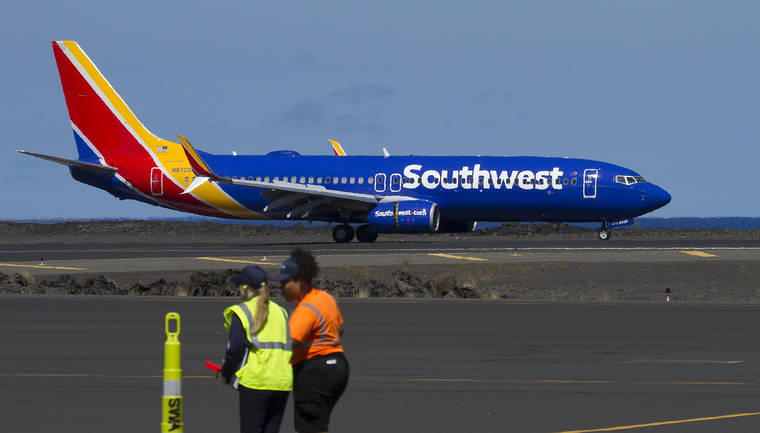Southwest Airlines says incursion into Hawaii’s island-hopping market is mostly complete
Southwest Airlines Co. says its planned incursion into Hawaii’s island-hopping market is mostly complete.
By the middle of January, Southwest expects to fly 34 daily departures on inter-island routes, up from 16 currently. Once they’re in operation, the company will be in no rush to make additional forays into a market long dominated by Hawaiian Holdings Inc., said Southwest Chief Revenue Officer Andrew Watterson.
“We are not the hometown airline,” Watterson said in an interview at the International Aviation Forecast Summit in Las Vegas. “The majority of our inter-island expansion is behind us. We have a good inter-island network announced but not yet in full operation, and maturing that is a first priority.”
Southwest’s plan signals a measure of relief for Hawaiian, which has posted the biggest share drop among U.S. airlines during the past year as investors fretted over stepped-up competition. Island-hopping flights represent a quarter of Hawaiian’s sales, and the Honolulu-based carrier has enjoyed a virtual monopoly in the state since Aloha Airlines stopped flying in early 2008.
Within Hawaii, Southwest is counting on three types of traffic: Locals responding to lower fares, mainland customers who are connecting to another island and travelers who book multi-island visits.
$29 Tickets
“We expect Hawaiian to have much more capacity than us,” Watterson said. “We’ve already shown with the flights we have today that we are able to fill them up just with the first source of demand. We don’t have those other two yet. That gives us confidence we should fill our aircraft.”
Southwest has priced some tickets as low as $29 for travel within the state as it seeks to use its 175-seat Boeing Co. 737s during the daytime before they return to the mainland. The Dallas-based airline began flights to Hawaii from the U.S. West Coast in March, and added its first inter-island flights in late April.
Hawaiian will show it has a competitive cost structure that can withstand a well-funded rival, said Chief Executive Officer Peter Ingram. The airline is betting it can maintain its position by relying on its customer hospitality, heavy slate of frequencies and fuel-efficient fleet of Airbus A321neo jets flying to the western U.S.
Ingram attributed the share decline to “the uncertainty represented by the current competitive situation we have in Hawaii’ as well as a “jittery” stock market. Hawaiian tumbled 44% during the 12 months ending Monday, the worst on a Standard & Poor’s index of 9 U.S. airlines, which fell 12%.
“We’ve just got to post the numbers that give the bulls a story,” Ingram said.


